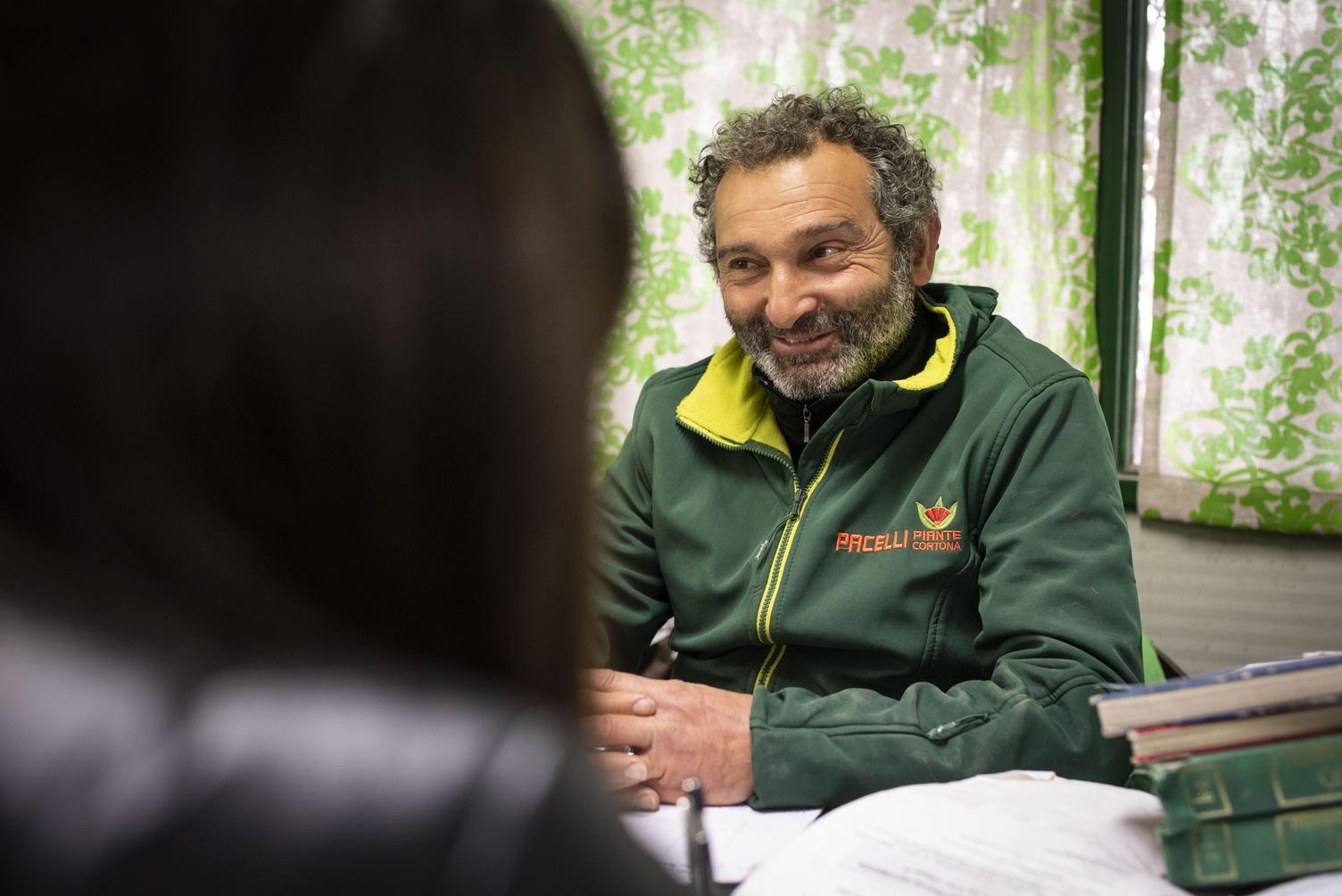By Benedetta Checcarelli
The importance of the role of the nurseryman does not only look at the functional aspect of a garden but, if you will, at its aesthetic and artistic aspect. It is with this fundamental clarification that Germano begins, during our chat under the imposing family greenhouse, which explodes with scents and aromas of an incoming spring. So let’s get right to the heart of the conversation, trying to better and more deeply understand what it means to work and be part of this world.

When we talk about the garden, we should not think of a simple jumble of bushes and flowers (as, on the other hand, usually and unfortunately happens), but rather of a system of shapes and colours that integrate perfectly into the house, becoming a single organism with it. “What we aim for as a company is not only to offer a complete service to our clients – but to restore the garden to its status as a place of contemplation and meditation.” And in fact this is very well connected to the impact that plants — and flora in general — have on our quality of life, transmitting well-being and serenity, as well as representing a sort of ‘eternity that outlives man’. In short, the structuring of a green space is not only a material issue, but also a symbolic one.

But how does the disposition process work?
“Assuming that the most intensive period is spring/summer, it would actually be advisable to plan the planting from the autumn season, since operations such as flowering require numerous precautions”. As Germano reiterates on several occasions, it is good to avoid random filling of spaces, and to look above all at the detail – since this is decisive for the final result, wanting to pursue greater chorality and harmony; In any case, it is always the owners who give the initial message, which will then be interpreted by the landscape architect.

A factor that affects the activity has certainly been and is climate change: “Twenty years ago it was unthinkable to carry out plantations like a bougainvillea, while now that we have moved to a more decidedly Mediterranean climate, the soil has become practically suitable for all citrus fruits”. He lists the most popular ones, some of which are present in the greenhouse: chinotto, bergamot and cedar, including the ornamental variants.

And what about the plants that are really “must haves”? The native ones, primarily strawberry trees, olive trees and laurels. Obviously, always respecting the landscape, to which you must adapt with a sensitive eye, and never vice versa; In recent years we have been able to see how nature is able to quickly regain possession of the numerous spaces, anthropized and then left to themselves. For this reason, the golden law is always the same: to support nature, to enhance its strength and beauty.

However, the family management of the business remains the pillar of Pacelli Piante, in which Germano would like, one day, to try to involve his children – respecting their passions and vocations.

Info: S.R. 71 – Terontola di Cortona (Ar) c/o exit Castiglion del Lago, Motorway connection Bettolle Perugia / Tel. 0575 67194 / 349 7186496 (Laura) / 333 4095529 (Germano). The Nursery is also open on Sunday mornings.
Also visit the new store in Terontola with many accessories and gift ideas.
